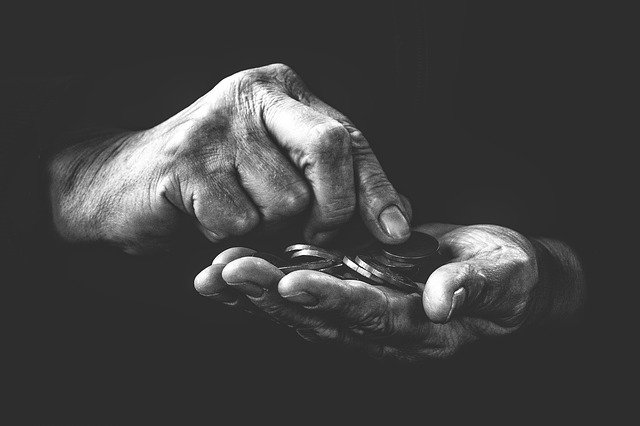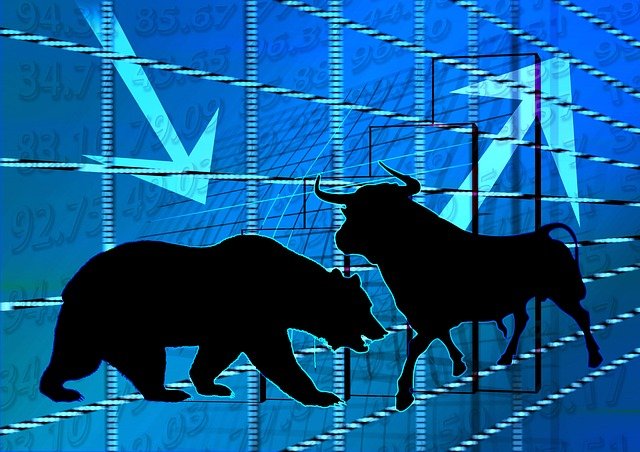The world revolves around. The economies are based upon the trading of cash to purchase goods and services. The economists define the definition of money, its origins from and the value it has. These are the many facets of money.
Medium of Exchange
Before the advent of the exchange medium–that is, money–people used to trade for the items and services they required. Two people, each having certain items that the other desired could sign an arrangement to exchange goods and services.
Early forms of bartering however, don’t offer the flexibility and transferability which makes trading profitable. For example, if a person owns cows, but wants bananas, they need to find someone who has bananas but also a desire to eat. What happens if a person comes across one who is in need for meat, but has no bananas and only offers potatoes? To obtain meat, that person has to find people who have bananas and is looking for potatoes, and so on.
The inability to transfer bartering goods can be tiring confusing, ineffective, and confusing. But that’s not the only problem when a person meets someone to exchange meat for bananas, they might not see a lot of bananas to be worth the price of a whole cow. This kind of trade will require coming to an agreement and figuring out an approach to determine the value of bananas in particular components from the cow.
Commodity currency has solved the problems. It is a form of product that acts as a currency. It was prevalent in the 17th as well as the 18th century, for instance, American colonists used beaver fur and dried corn in transaction. 1 Possessing widely recognized values, these items were used to purchase and sell various other items. The items used in trade were characterized by certain traits They were highly sought-after and therefore important, yet they also were durable as well as portable and easy to store.
A different, more sophisticated example of money that is made up of commodities is one that is a precious metal like gold. For many centuries gold was used as a backer for paper currency, up to around 1970. 2 In the instance of the U.S. dollar, for example, this meant foreign governments could use their dollars to change them for gold using a specific rate in gold using that of the U.S. Federal Reserve. It’s fascinating that, in contrast to beaver fur as well as dried corn (which are used to make food and clothing as well) gold is a precious commodity simply because people desire to have it. It’s not really useful, you cannot eat it or keep you warm during the night However, the majority people consider it gorgeous, and they are aware that people who think it’s gorgeous. Therefore, gold is a thing that is worth. Therefore, gold is a tangible symbol of wealth, based upon how people perceive.
This connection between gold and money provides an understanding of how money increases its value, as a representation of something worth it.
Impressions Make Everything
The other type of currency can be described as the fiat currency that does not require backing from an actual commodity. The value of the fiat currency is determined by demand and supply, and the trust of people in its value. Fiat money originated due to the fact that gold is the most scarce of resources, and fast-growing economies were unable to mine enough gold to support their currency demands. 3 4 In a rapidly growing economy the requirement for gold to provide value for money is very inefficient, especially when the value of gold is determined by the perceptions of people.
Fiat money is the symbol of the people’s sense of worth and is the reason it is made. A growing economy seems to be producing other items that are important to its own economy and to other economies. The more robust an economy is, the more its money will be viewed (and desired) and in reverse. However, perceptions of the public should be backed by an economy that is able to provide the goods and services that consumers want.
In 1971, for instance in 1971, the U.S. dollar was taken off the gold standard. This meant that the dollar could no longer be redeemed in gold and the price of gold could no longer be fixed to any dollar value. 5 This means that it is now feasible to create greater amounts of paper currency than gold backing it. the state of the U.S. economy backed the dollar’s worth. If the economy slows down in the future, the value of U.S. dollar will drop at a national level due to inflation, and internationally, through exchange rates for currency. A collapse of the U.S. economy would plunge the entire world into a financial dark era, and numerous other nations and organizations are working hard to make sure that this never happens.
Nowadays, the worth of money (not only the dollar, but all currencies) is determined solely by its buying power determined by the rate of inflation. 6 That is why printing money won’t bring wealth to a nation. It is created through the constant interaction between tangible, real objects, our desire to have them as well as our faith in the value of what we buy. It’s worth it because we want it however, we do so only because it will get us an item or service we want.
What is the best way to measure money?
How much money is available, and what form are it taking? Investors and economists are asking this question to determine if there is deflation or inflation. The money is classified into three categories, so that it can be more easily identified to measure:
- M1 The category of money encompasses all denominations of physical coins and currencies as well as demand deposits, such as checking accounts as well as NOW accounts, as well as travelers”checks. This type of money is the most narrow of the three and is basically the money used to purchase goods and pay for things (see below for the “active funds” part in the section below). 7
- M2 – Based on more broad standards, this category adds all the money in M1 to all related time deposits, savings account deposits and non-institutional money market funds. This is a category that represents funds that are easily transferable in the form of cash. 8
- M3 – The most broad category of currency, the M3 includes all the money within the definition of M2. M3 is a combination of big time deposit, institutions money market funds and short-term repurchase agreements and other more liquidity assets. 9
By combining the three categories together and we get the money supply of a nation that is, the amount total of cash that is available in an economy.
Active Money
The M1 category comprises what’s known as active currency, which is the total value of all coins and paper currency that circulate. 7 The amount of active money fluctuates seasonalally and is also fluctuated weekly, monthly, and on a daily basis. The United States, Federal Reserve Banks provide new currency to The U.S. Treasury Department. 10 Banks loan money to their customers. This money turns into active currency once it’s circulated.
The fluctuating demand for cash is an ever-changing active money total. For instance, many people cash-checks or withdrawals from ATMs on weekends and so there’s more cash in circulation during the weekdays than Friday. The demand for cash among the public decreases during certain times of the year, such as after the holiday season of December as an example. 11
How Does Money Get created
We’ve talked about the reason and the way in which money, a symbol of value made in the economic system However, another crucial aspect in the context of the economy and money is the way a nation’s central bank (the central bank of the United States is the Federal Reserve or the Fed) can influence and alter the quantity of money available.
If the Fed is looking to boost the amount of money available, possibly to spur economic activity it can certainly print it. But, the physical bills constitute only a small portion of the overall supply of money.
Another method for central banks to boost the amount of money it has available is to purchase fixed-income government securities on the market. If the central bank purchases these securities from the government and puts the money in the market and in the hands of the public. What is the procedure for a central bank, such as the Fed make money for this? It’s not as difficult as it seems it’s because the central bank creates the cash and transfers it to the sellers of these securities. 12 Alternatively it is possible that the Fed may reduce the interest rate permitting banks to offer credit or loans at a low cost–a process known as low-cost money. This encourages both individuals and businesses to take out loans and spend.
To decrease the quantity of money or perhaps to lessen inflation the central bank performs the opposite by selling government securities. The money the buyer makes payment to the central bank is basically removed from circulation. Be aware that we’re generalizing this case to simplify things.
Keep in mind that as the people are able to believe on the value of their currency the central bank could issue more. However, when the Fed issues excessive amounts of money, the value will fall like anything else with a greater supply than demand. Thus the central bank is unable to just print money according to what it wishes.
This is the History of American Money
Currency Wars
The 17th century was a time when Great Britain was determined to maintain control over both the American colonies as well as the natural resources that they had control over. To achieve this they British restricted the supply of money and banned colonies to issue coins on their own. Instead, colonies were required to exchange trade with English bill of exchange which could only be exchanged for English products. Colonists would be paid for their goods using these bills which effectively cut them out of trading with other nations.
The colonies returned to a bartering system that included ammunition cigarettes, tobacco, nails pellets, and any other item which could trade. Colonists also took whatever foreign currency they could find and the most well-known was the huge sterling Spanish dollars. These were known as pieces of eight due to the fact that they were a necessity when you needed to exchange money you took out your knife and cut the coin into eight pieces. This is how we got the phrase “two pieces,” that is a quarter one dollars. 13
Massachusetts Money
Massachusetts was among the first state to stand up against the country of its birth. The state in 1652 issued the state’s own coinage of silver which included coins like the Oak Tree and Pine Tree shillings. The state evaded the British law that stipulated it was only monarchs of the British empire could issue coins. They did this by establishing the date of the coins from 1652. This was in a time period where there wasn’t a monarch. It was in 1690 that Massachusetts introduced the very first printed money , known as bill of credits.
Conflicts among America and Britain increased through the time the Revolutionary War broke out in 1775. The colonial rulers declared independence and instituted an entirely new currency called Continentals to pay for their part of the conflict. The problem was that each government printed the amount of money they needed, without linking it with any assets or standards, which meant that the Continentals saw an explosion in inflation and eventually were eventually useless. This was a setback for government officials from preventing the American administration from using paper currency for more than 100 years. 13
The aftermath of the Revolution
The chaos of the Revolutionary War left the new country’s financial system in a complete destruction. A majority of the currencies issued by the newly created United States of America were ineffective. The issue wasn’t solved till 13 years on, in 1788, when Congress was given constitutional power to issue money and determine its price. Congress set up a national currency system and introduced dollars as the principal instrument of currency. 14 There was also a bimetallic standard which means that both gold and silver could be assessed in the same way and used to back paper dollars.
It took years to remove all foreign currency as well as those competing with state currencies removed from circulation. Bank notes were circulated all the time, however, because the banks issued more banknotes than could cover with coins These notes were frequently traded for less than their actual value. 16
At some point afterward, eventually, the United States was ready to test the paper currency. In the early 1860s The U.S. government created more than $400 million of legal tender to fund its fight against the Confederacy during the American Civil War. They were referred to as greenbacks since their backs were covered in green. The government backed this currency and said the currency could serve to repay the public and private debts. However, the value did change in accordance with the North’s successes or failures at various stages of the conflict.
The aftermath from the Civil War
In February 1863 in 1863, the U.S. Congress passed the National Bank Act. The act created the monetary system that saw national banks could issue notes that were backed with U.S. government bonds. It was the U.S. Treasury then worked to remove the state bank notes out of circulation to ensure that national bank notes would be the sole cash currency. 18
In this time of reconstruction there was some debate on what was a bimetallic test. Some advocated using silver to support the dollar while others favored gold. The issue was settled in the year 1900, with The Gold Standard Act was approved, making gold the sole source of backing the dollar. This meant that theoretically, you could have your money in paper and exchange it for the same worth in gold. In 1913 the Federal Reserve was created and was given the authority to control the economy by regulating the supply of money and interest rates on loans.
The Bottom Line
Money has seen a significant change from the time of skins and shells but its fundamental purpose isn’t changing at all. No matter what shape it takes, money provides us with a means to exchange for services and goods and helps the economy grow because transactions can be executed at a faster pace.







Leave a Comment